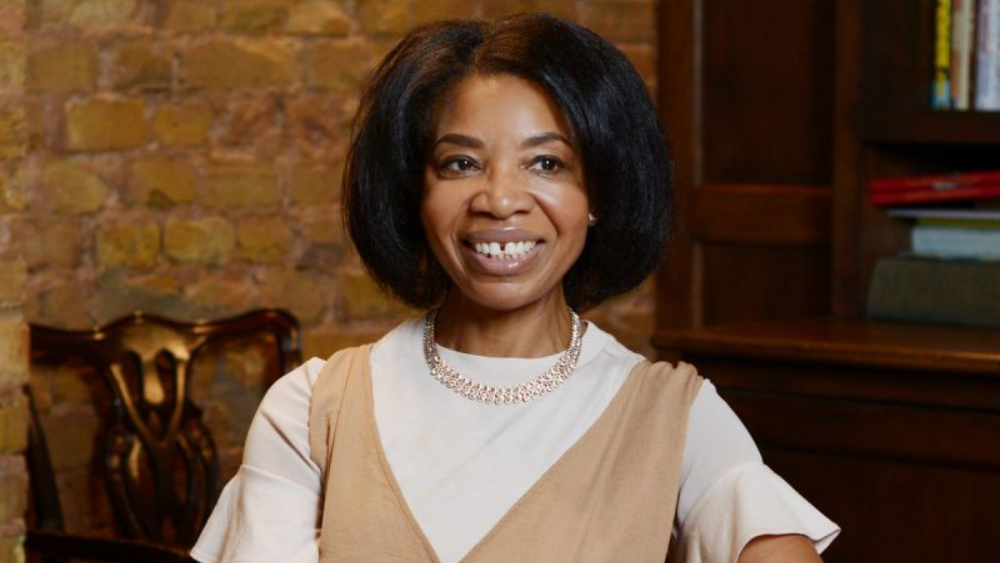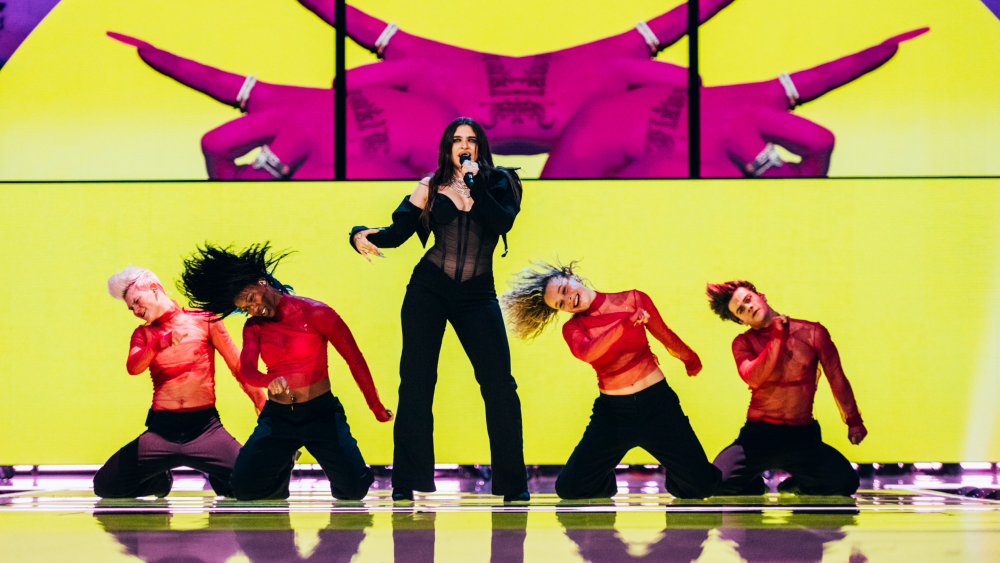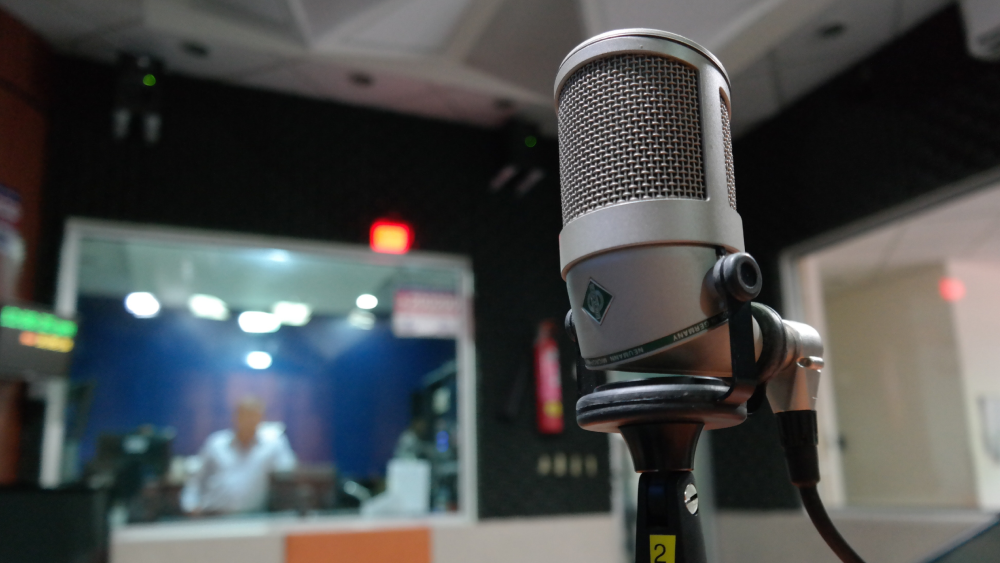Brass Bands England works to encourage, support and promote the music making of English Brass Bands. As an organisation, it works with a wide range of partners in strategic, tactical and informal ways to help share the challenges and rewards of being involved with a brass band.
Some members of the brass band community recently joined forces to call for greater diversity and inclusion within the brass banding community. B.A.N.D – Bandspeople’s Alliance to Negate Discrimination – is a newly formed organisation set up to eliminate discrimination of any kind from the Brass Band movement.
In line with the B.A.N.D mission, Brass Bands England recently hosted a Equality, Diversity and Inclusion Roundtable which invited members of the banding community to share their positive and negative experiences and personal stories surrounding diversity and inclusion.
M recently spoke to Kenneth Crookston, chief executive of Brass Bands England, about the efforts both they and the wider banding community are making to tackle outdated stereotypes and promote diversity.
'Brass banding is something that exists for people of all ages, abilities and ambitions, and somewhere there is a band to suit any combination of these. Ultimately, it is our role to ensure that anyone who wishes can find their band and feel like they really belong there.'
Hi Kenny, thanks for taking the time to chat to us. Can you start by telling us a bit about Brass Bands England and the role you play there?
Happy to be able to speak to the readers of M about brass bands! Brass Bands England is a membership organisation, funded by Arts Council England, our members’ contributions and other commercial and event income. We currently have 408 member organisations, covering over 550 individual banding groups and around 15,000 musicians. Our five staff members are based in Barnsley in South Yorkshire, although we have been working at our homes in or near Barnsley, Leeds, Sheffield, Manchester and Edinburgh since the Covid lockdown first kicked in back in March.
BBE was formed in 1968 as the British Federation of Brass Bands and, for the majority of its existence, played a fairly minor role in brass band circles. It became Brass Bands England (BBE) in 2013, at a time of considerable change in the management and outlook of the organisation, with current Chairman Mike Kilroy taking the reins and solidifying the structure, trustees and staff personnel with a view to a much more sustainable future for BBE and brass bands themselves.
Our membership benefits encompass training events including Player and Artistic Development seminars, access to our ground-breaking BandSafe safeguarding system and use of our national BOPAs in England and Wales, band management information, discounts on insurance, instruments and other products through our commercial partners, and advocacy on all banding matters, including at Westminster and in other areas of local government. We also run the National Youth Brass Championships of Great Britain, although we were very sad to have to cancel this year’s event, which was due to be held at the end of March.
I was appointed as chief executive in April 2018 after 14 years as Editor of British Bandsman, which was the oldest weekly music magazine in the world, and a long career as a player (mainly cornet but sometimes whatever the band ‘needed’) and administrator in brass bands. My role is to deliver, along with the other staff members, the trustees’ vision in accordance with their ACE-approved business plan and provide a platform for a better banding experience for as many people as possible.
What would you say have been your biggest achievements with Brass Bands England?
I think the current staff and trustees have succeeded in making BBE a much more relevant organisation than it has been at any point in its history, but that is only part of the story. This relevance has been achieved by providing information, services and other benefits for our members and for brass bands in general, but at the same time we have projected a much more positive and modern image of brass bands within the wider arts community, partially through restructuring our Youth Champs, but also in our safeguarding work. An inaccurate public image – perhaps a cross between a Hovis advert and a relic in an industrial museum – is arguably the biggest issue facing a positive future for brass bands, and being instrumental in kickstarting a change in this respect is something upon which we are very much focussed.
'Not being able to rehearse or perform together has caused every band in the country to re-evaluate its purpose and how that can be carried out in even the slightest way.'
How has COVID-19 impacted the UK’s banding communities?
This is obviously a very challenging time for all brass bands, as it is for everyone associated with the arts. Not being able to rehearse or perform together has caused every band in the country to re-evaluate its purpose and how that can be carried out in even the slightest way. Many have continued to meet regularly online and this has produced some fantastic creative outcomes, with remote ‘lockdown’ videos providing virtually the only possible performance opportunities, while some have focussed on the social aspects of banding to provide members with an often-vital lifeline to each other.
With no prospect of public performances during the normally very busy summer period, bands are also finding it extremely difficult to remain financially stable. Christmas is another very important time of year from a financial perspective, so we have recently launched the Save Our Brass Bands campaign along with the Crowdfunder web platform, which has the potential to bring a lifeline for every band in the UK that has felt the financial impact of the Coronavirus.
M Magazine recently published an interview with Chris Hardy of the recently formed B.A.N.D group. Do you recognise the issues raised and the landscape portrayed?
When I started playing in my local brass band in the early 1970s, the participants were overwhelmingly male – probably more than 95 percent. This has changed steadily for the better ever since then and the number of female players is much closer to 50 percent nowadays, even if opportunities for female conductors, composers and adjudicators can still appear limited in some areas. There is a lot of work to be done and attracting members of black, Asian and minority ethnic communities is something that brass bands would do well to work harder on for a multitude of reasons. We’re aware of isolated cases in which those who have encouraged greater diversity have met with resistance, but the demographics of bands are changing. If you walked into a bandroom anywhere in the country tomorrow, you’d be just as likely to find (socially distanced!) doctors, engineers, scientists and teachers as you ever were miners, shipbuilders, mill workers or factory employees.
Can you tell us about the work you have done with B.A.N.D in the past?
We were very pleased to see the emergence of B.A.N.D during the summer and we immediately engaged with them to help get established as an organisation with suitable aims and objectives. We also welcomed some of their personnel to a meeting of the BBE EDI working group and to take part in a roundtable event that discussed EDI, at which they made an excellent contribution to our picture of the current state of play. An organisation like B.A.N.D could play an important role in making brass bands a more diverse and inclusive form of music making and we will be very happy to continue to work with them in pursuit of our common aims in the years ahead.
'If you walked into a bandroom anywhere in the country tomorrow, you’d be just as likely to find (socially distanced!) doctors, engineers, scientists and teachers as you ever were miners, shipbuilders, mill workers or factory employees.'
Tell us about the new BBE Equality, Diversity and Inclusion (EDI) working group and what it aims to achieve?
Our EDI working group was formed in the wake of an excellent seminar on the subject by Sophie Hunter of IVE in Leeds at our annual conference last year. BBE trustee, Julie Hoggarth, is in charge of the group and she has extensive experience of working in BAME environments through her Brass of the Saff and Drum and Brass projects in Leicester. These are cosmopolitan groups of young musicians and we were delighted to welcome Brass of the Saff to our Youth Champs in 2019, when they made a tremendous impression on everyone who witnessed their performance, including ACE chief executive Darren Henley.
Julie is ably assisted by Rosie Banham, BBE’s Membership Support Officer, who also has extensive experience of volunteering on a social mobility project in El Salvador through her local church in Saddleworth. Although they will address some complex issues, the group’s ultimate aim is straightforward - for brass bands to reflect society in whichever part of the country they exist by 2030. The BBE trustees and staff will continue to give as much support as we possibly can to support the group’s mission which, if achieved, also promises to make brass bands one of the most vibrant forms of music making in the UK and beyond.
You spoke about a Diversity & Inclusion session at your Better Banding for All Conference in late 2019. Can you tell us a bit about that?
Led by Sophie Hunter, a group of around 20 delegates explored concepts of unconscious bias, protected characteristics and some common perceptions of what inclusion and discrimination does and does not mean. The general feeling was that change was to be welcomed but more support was needed for bands. The direct result of this session was that BBE formed our EDI group led by Julie Hoggarth.
'At the heart of the process and the solution is communication. The organisation is looking at three questions: Where are we now? Where do we want to be? How do we get there?'
In what other ways is Brass Bands England investing in greater diversity and social inclusion?
BBE has shown its commitment to this by appointing a member of staff to the group. Weekly meetings take place to plan the strategy and facilitate change. The group is actively seeking out different voices and organisations with which to engage on this journey. At the heart of the process and the solution is communication. The organisation is looking at three questions: Where are we now? Where do we want to be? How do we get there?
A national online roundtable event to which representatives from diverse backgrounds were invited to discuss the three questions was facilitated and chaired by BBE. Attendees talked about the problems faced by the LGBT community, disabled people and those from non-white backgrounds within banding. Positive experiences were also shared. The meeting revealed the will, the need and the energy to make positive change amongst brass players from across the country. The group is actively working to take part in, and further the EDI conversation, at grassroots, board level and nationally.
How important is education to Brass Band England’s diversity and inclusion mission?
BBE sees training as fundamental to increasing awareness and subsequently changing attitudes within banding. We plan to develop tools which bands can use in order to raise the profile of what it is that we do really well, which is putting music at the centre of people’s lives. We would like to share this message with many more communities to broaden the demographic of banding.
To you, what does the Brass Band community look like in 2020, and how do you hope it will look in 10 years’ time?
What we see now in our EDI meetings is the will for change. In ten years’ time we envisage that bands actually will reflect the communities in which they are based. Everyone will feel welcome, comfortable and supported in the bandroom as a result of proactive social engagement by bands within their communities. Brass banding is something that exists for people of all ages, abilities and ambitions, and somewhere there is a band to suit any combination of these. Ultimately, it is our role to ensure that anyone who wishes can find their band and feel like they really belong there.





